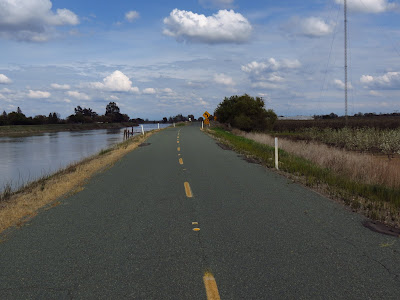What to do on a rainy weekday in Sacramento?
How about going to the best museum on aircraft from the beginning to present day that I have ever seen. Other than some great aircraft on the floor and outside they have the best aircraft engine exhibit I have ever witnessed.
The Pratt & Whitney Wasp Major air-cooled R-4360...was the largest production piston engine in the world...ever. I am trying to give you an idea of its size.
Here it is from the side. This brute has 28...yes 28, cylinders arranged like corn on the cob so the back cylinders get some of the cooling air. Besides aircraft like the "Spruce Goose", the engine was the main component of many of the biggest aircraft of the 50's such as the Boeing KC-97 Stratotanker, B-50 Superfortress and the B-36 Peacemaker. What killed the big piston engines is the weight. More power equates to more weight, 3600 lbs each, where as the jet has more power and less weight.
Cut view of engine shows the arrangement of the pistons.
The docent that followed me around explained a lot about the piston vs the rotary engine. The first rotary engines meant that the engine turned at the same speed as the prop. I was curious as to how they fed fuel to the piston if it was spinning that fast...it was thru the center of the crank. Also, with the rotary engine there was no adjusting the speed, it was either on (full power) or they coasted with engine off.
This is an English version of the Pratt & Whitney R-2800, which is a 18 cylinder engine.
The odd thing about this English piston engine is that it has no valves. Instead of valves, the piston is surrounded with another sleeve which if you look closely has opening in it. As the sleeve turns around the piston its holes line up to to do the job of valves.Weird, I know!
On the other hand...the American version of this same engine with valves shows valves almost twice as big as a silver dollar.
This unusual beast is a 30 year old remote control helicopter with counter rotating blades so no tail assembly was needed. It carried two torpedo's (orange tips) and had a range of 80 miles. The docent mentioned that even today, few Navy personnel even knew it was part of their arsenal.
The Pratt & Whitney J-58, developed in 1958, is the engine that powered the still (classified) world speed record holder in the SR-71 Blackbird. Mach 3 plus, how far "plus" is anyone's guess."'
I've added the Fairchild-Republic A-10A Thunderbolt ll, commonly know by it's affectionately known name of "Warthog" because it's my brothers favorite plane...I like it too.
The Allison V-3420, a 24-cylinder turbosupercharged double V- liquid-cooled piston engine, which pretty much mated two twelve cylinder Allison engines (on their own were awesome) together to form a 24 cylinder monster. Two large crankshafts into a huge gearbox then feed twin counter rotating propellers.

















































